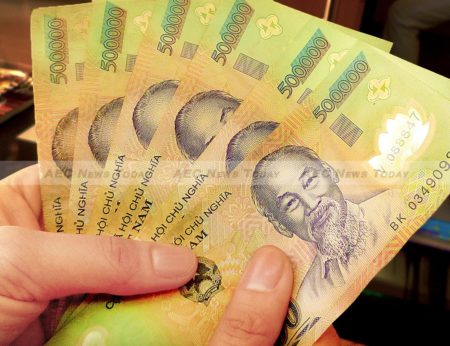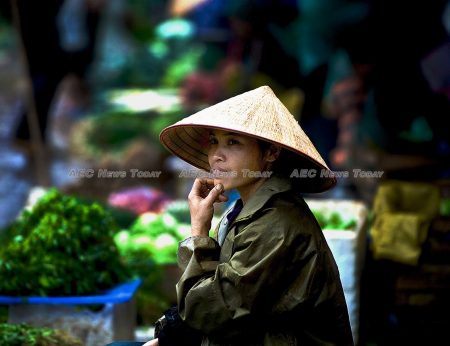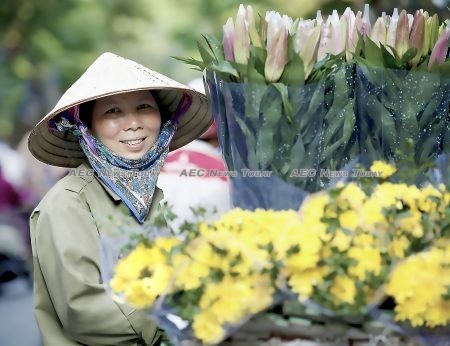After profound advances in manufacturing and services most observers now believe that Vietnam is well-positioned to meet its principal Vision 2035 goal of achieving upper middle-income status. But sustained agricultural gains are by no means assured and key agricultural officials recognise this.

In 2013, the government introduced an ‘agricultural restructuring’ programme and revised the Law on Land.
Major international agencies, including the Asian Development Bank (ADB) and The World Bank (WB) have urged broad-based reform. Action so far has been limited primarily because crop, livestock, and aquaculture production continue to rise.
Vietnam’s policy makers — well known for their conservatism — see radical reform as premature. This is a serious mistake.
At the end of the American-Vietnam war agriculture in Vietnam employed around 75 per cent of the total workforce and produced roughly 10 million tons of rice, the country’s staple. The majority of Vietnam’s population of 50 million was significantly undernourished.
Agricultural recovery was slow, blocked by the government’s collectivisation policies. Formal reform efforts through Directive 100 in 1981 partially freed up agricultural markets. They accelerated with doi moi (renovation) in 1986 and the Law on Land in 1988. The latter granted land use rights to households and stimulated a dramatic response from farmers.
By the early 1990s Vietnam was becoming a major agricultural and aquaculture product exporter. Agricultural output was driven by an increase in labour, expanding cultivated area, improved crop varieties and livestock/aquaculture species, ample supplies of dry-season water, and massive applications of agrochemicals.
Stable macroeconomic setting

Public and private investment increased as well. The public sector extended the irrigation system, improved flood control, promoted rural electrification, and upgraded infrastructure.
Private investors emphasised mechanisation, new products and aquaculture. Appropriate fiscal and exchange-rate management helped by providing a stable, supportive macroeconomic setting.
These changes reduced rural poverty, improved food security, boosted export revenue, and deepened marketing and distribution chains throughout the economy.
But the main factors responsible for recent agricultural growth have now run their course. The agricultural labour force is declining, and the average age of farmers is rising markedly.
Urban encroachment, reforestation and the expansion of national parks and protected areas — the result of urban demand for landscape amenity and booming tourism — limit the physical supply of agricultural land.
Further, productive land is being lost to salinity intrusion and coastal erosion. Dry-season surface water is scarce.
Output gains from crop and livestock/aquaculture improvements are difficult to sustain due, in part, to climate change-induced pest and disease pressures. The agricultural environment has been seriously degraded and polluted. Rice mono-cropping has depleted soil fertility, while over-extraction of groundwater to supplement dry-season surface flows is exhausting aquifers, leading to land subsidence and contamination.
The over-use of agrochemicals has polluted rivers, lakes, groundwater and wetlands. Urban and industrial dumping of waste compound these problems.
Getting more from less, and then some more
Future agricultural expansion in Vietnam involves only one option: increased productivity. Output per unit of labour, land, and water will have to rise sharply as ageing farmers curtail their agrochemical use and identify cultivars and animal species which thrive under these social and bio-physical constraints.
A 2016 World Bank study described the challenge as ‘gaining more from less’. This assessment is only partly true.

Vietnam’s challenge is to create an institutional setting which induces farmers, whatever their age, to supplement the available land and water with an expanded array of inputs (information, mechanisation, and new technologies) in ways that generate sustained increases in agricultural output and incomes.
Fortunately, there is scope for these adjustments. Government land restrictions, currently affecting over three million hectares (about 7.4 mln acres), keep too many resources in low value-added rice production. Policy change would raise the production of high value-added crops like floriculture, horticulture and livestock feed, and boost farm incomes.
Fees and other charges for water use (which are currently non-existent) would increase water productivity in Vietnam, where it is among the lowest in Asia, reducing pressure on over-exploited aquifers.
Higher government spending on agriculture and rural development would support expanded R&D on resource-saving technologies adapted to the needs of ageing farmers, and raise the quality of rural infrastructure. Both actions would increase net farm-gate returns.
Increased knowledge and government will needed
The revival of farmer field schools, once common and successful, would give farmers and rural distributors information on productivity-enhancing innovations.

Government subsidies would expand the adoption of green technologies such as wind, solar and integrated pest management. They would also reward farmers for conservation practices, including rotations, land rehabilitation, inter-cropping and enterprise diversification.
This support would reduce rural pollution and lower agriculture’s carbon footprint. Finally, by enforcing existing environmental regulations, the government could abruptly reduce much of the soil and water pollution that is currently undermining farm productivity.
None of this is rocket science. An appropriate response only requires that farmers and rural entrepreneurs have access to the knowledge and incentives to adapt, and that the government understands the need for agricultural reform and acts accordingly.
This article was written by Malcolm McPherson, a Senior Research Associate with the Vietnam Program at the Ash Center for Democratic Governance and Innovation, the Kennedy School of Government, Harvard University. This article first appeared on East Asia Forum under a Creative Commons License and is reproduced here with its permission.
Feature Photo
Related:
- High-tech agriculture project funded in Vietnam (Fresh Plaza)
- Six million people to need agricultural vocational training (Viet Nam news)
- VN needs to invest more in agricultural processing sector (Viet Nam News)
East Asia Forum
It consists of an online publication and a quarterly magazine, East Asia Forum Quarterly, which aim to provide clear and original analysis from the leading minds in the region and beyond.
Latest posts by East Asia Forum (see all)
- China’s South China Sea bullying seeing increased blowback from Asean claimants – February 2, 2022
- Illusionary, delusionary or visionary? Cambodia tests living with COVID-19 – December 6, 2021
- Prioritising a Philippine–EU FTA is vital for post-pandemic recovery – July 26, 2020
- Time for Asean to stand up for itself in the South China Sea – July 25, 2020



Merci pour les informations
Un bon sujet
We have benefited the subject thanks
Valuable information. Well worth the thanks.